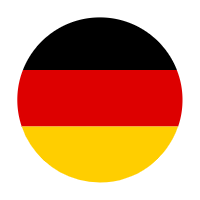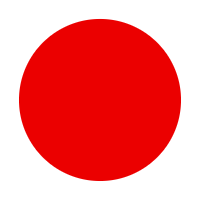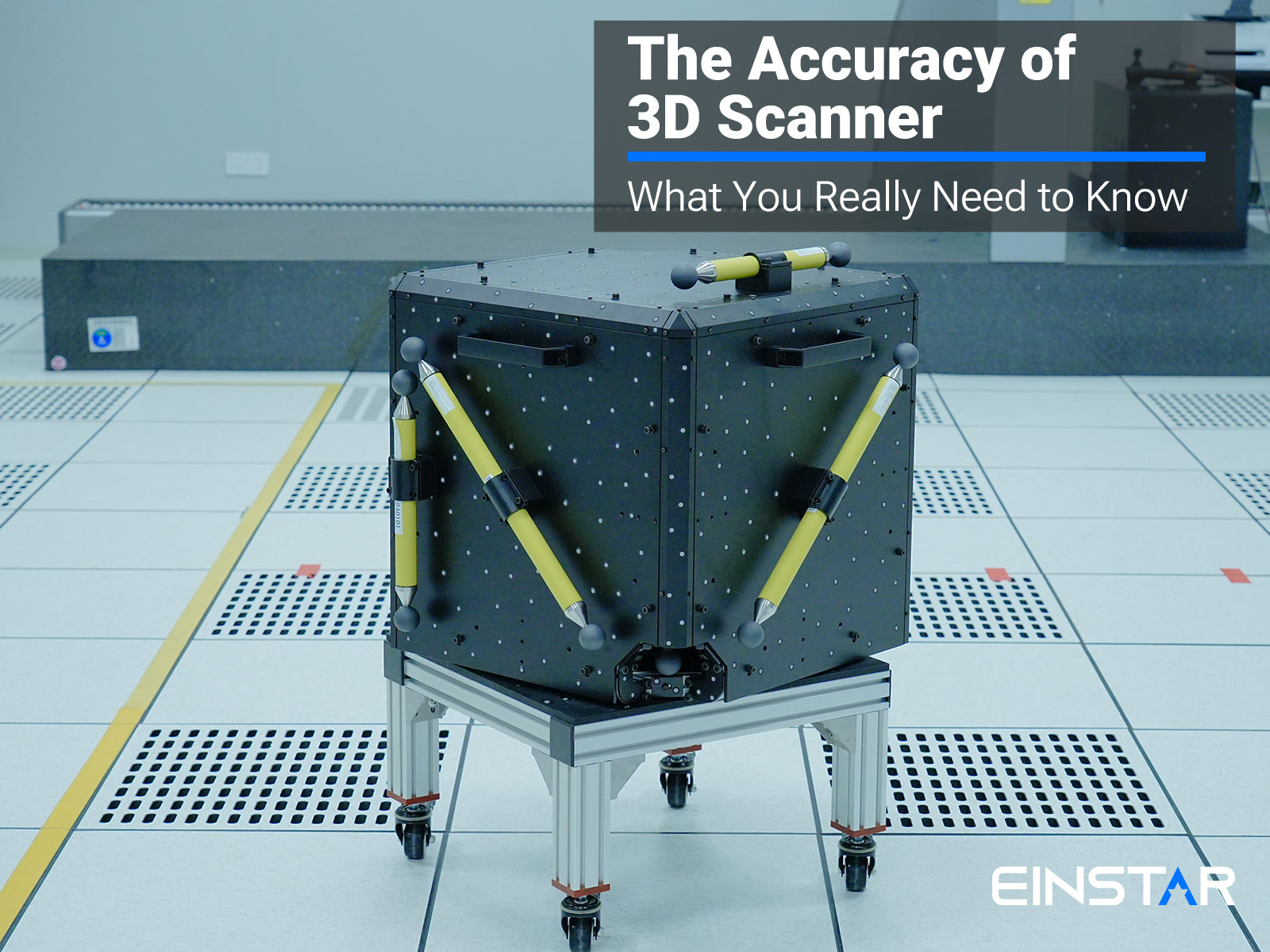Key Insights:
1. Understanding Accuracy Parameters
-
Please note, single-frame accuracy is not the parameter used to measure the accuracy of handheld scanners. It does not reflect the scanner's overall performance. If you wish to select products based on accuracy parameters, what you need to consider is volumetric accuracy.
-
For example, EinScan RIGIL delivers a volumetric accuracy of 0.04 mm + 0.06 mm/m, meaning: The base error is just 0.04 mm, even for small objects.For every additional meter of scanning range, the error increases by only 0.06 mm.
-
Volumetric accuracy is the true benchmark for handheld 3D scanners. It measures the global error across the entire scanned object in 3D space, and is far more relevant for real-world applications.
2. Selection Tips
-
Avoid relying solely on advertised single-frame accuracy. Instead, look for volumetric accuracy data validated by third-party labs.
-
Prioritize scanners tested by laboratories accredited under CNAS (China National Accreditation Service) and ISO/IEC 17025. These certifications ensure the reliability and repeatability of the reported accuracy.
3. Industry Benchmark
-
Shining 3D has its in-house lab with CNAS accreditation and ISO 17025 laboratory certification, leads you to explore the remarkable genesis of high-accuracy technology. It's not just about flashy specs like “0.02mm accuracy"—it's about certified, repeatable performance. Shining 3D Metrology-level 3D scanners are evaluated under strict international standards like VDI/VDE 2634 Part 2&3, and backed by CNAS-accredited and ISO/IEC 17025-certified labs.
That's the DNA behind the EINSTAR the prosumer-level brand from Shining 3D—bringing professional-grade technology to creators, engineers, and innovators everywhere.
How do we actually do to calibrate the accuracy of a scanner?
Accuracy traceability means that the laboratory calibrates the 3D scanner in accordance with the calibration specifications, in a stable environment, with accuracy traceable standards. SHINING 3D assesses the accuracy of its 3D scanners using a variety of sophisticated measurement instruments and methods, adhering to the VDI/VDE 2634 part 2 and 3 standards.

Calibration begins with creating an ideal setting. The SHINING 3D Accuracy Laboratory implements strict temperature, humidity control, and anti-vibration measures. The laboratory maintains a constant temperature of 20±0.5 degrees Celsius throughout the year, with humidity levels kept between 40-60% RH.
SHINING 3D has designed corresponding accuracy calibration devices and processes for various self-produced high-precision 3D scanners in accordance with VDI/VDE 2634 Standards. Take the calibration process of metrology-level handheld laser scanners as an example:
The accuracy of a metrology-level handheld laser 3D scanner is calibrated by a cube with 7 standard artifacts. The cube is designed and manufactured in-house by SHINING 3D and these 7 artifacts are strictly calibrated by a third party organization.

Standard Artifacts: SHINING 3D designed and manufactured the frame in accordance with the requirements of the VDI/VDE 2634 Part 2 and Part 3 standards for the spatial positions of the 7 artifacts, taking into account the need for automatic robot scanning.
In addition, SHINING 3D's Accuracy Laboratory has a Coordinate measuring machine (CMM) that can also calibrate the artifacts and act as an internal verification.

Coordinate measuring machine (CMM): It measures an object's physical geometrical characteristics by sensing discrete points on its surface with a probe.
So how do you ensure that your CMM are operating accurately? SHINING 3D's Accuracy Laboratory has a laser interferometer that calibrates the CMM by providing high-precision measurements of displacement and positioning errors.

Laser interferometer: it uses the interference of laser beams to measure tiny distances, displacements, or changes in refractive index with high accuracy.
Does accuracy matter?
To understand this question, it is most important to understand the specific application of your scanned model. In 3D scanning, accuracy is especially important for industrial applications, such as quality inspection and CNC manufacturing. And for applications that may only use 3D data visually, such as data archiving and virtual displays, accuracy may not be a very important factor.
Will Co, for example, used EINSTAR he scanned the human face in order to make a Halloween mask. To accommodate the size of the face, such an application undoubtedly requires a certain level of accuracy in the scan to restore the details of the face, but it does not require as high a fit as a high precision industrial inspection. EINSTAR is certainly welcomed in such scenarios.
EINSTAR is also accurate enough for 3D printing, and you can check out 3D Prints & Builds' video in which he scans a figurine about 7 cm tall and prints it out.

3D Printed Figure
EINSTAR is also accurate enough for reverse engineering, for example Edward uses EINSTAR VEGA to scan yachts in outdoor environments to improve fitting and productivity for customization.
Watch the video below to see the reverse engineering process!
From scanning to CAD modeling, this shows how EINSTAR VEGA & EXModel simplifies the journey from real-world objects to production-ready CAD model.
What about the Accuracy of EINSTAR? & Accuracy or Resolution?
In these scenarios, what you truly require is the scan's resolution. Defining the point distance which the scanner is capturing. The smaller the distance, the higher the resolution, and more density points of the data for better detail.

To make the EINSTAR more accessible, we perform random accuracy tests on EINSTAR. However, each calibration plate of the EINSTAR is calibrated in the SAME way as a professional scanner. Users can control good results from their scan data by calibrating with EINSTAR when needed.

EINSTAR VEGA scanned relief , size in 14×2m
In conclusion, EINSTAR does not provide inaccurate data that has not been verified by accuracy laboratories. We aim to deliver authentic 3D scanning knowledge offer high-quality scanning data and provide an exceptional scanning experience with professionalism, rigor, and accountability. Choose the right scanner for your application, not just based on a spec sheet.
If you need any help with scanner selection, Welcome to www.einstar.com for free consultation! There are many professionals there to answer your questions about accuracy and model selection!









Share:
How Fast Can You Go from Scan to CAD? Reverse Engineering Just Got Easier.
Want Faster 3D Scanning? These 4 Factors Could Save You Hours